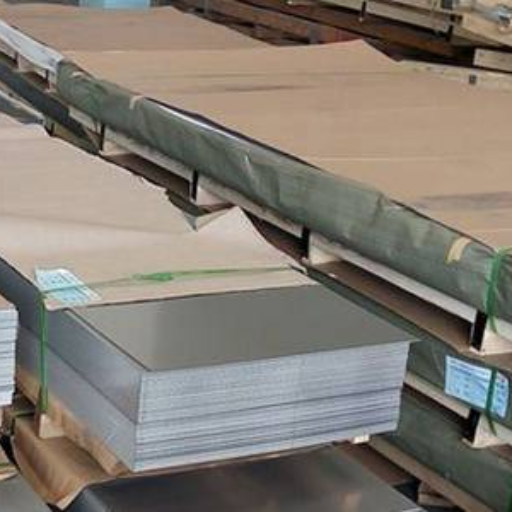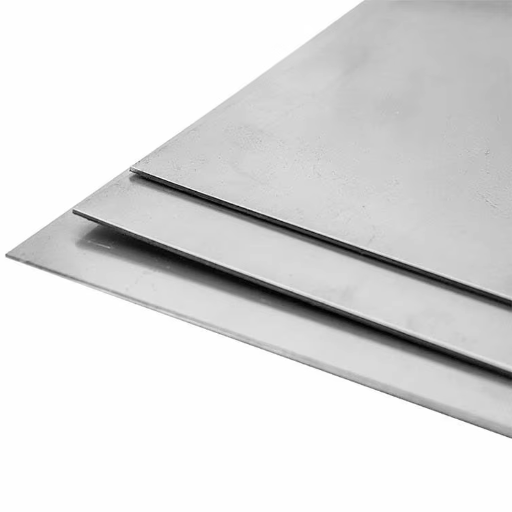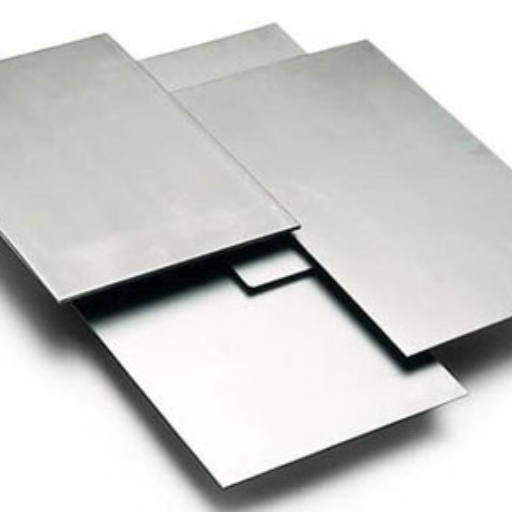To ensure durability, safety and cost efficiency, engineers and materials scientists need to select the right alloy for industrial applications. Hastelloy® C-276 sheet is a unique material that has exceptional mechanical properties besides being highly resistant to various corrosive environments. This post gives an in-depth understanding of Hastelloy® C-276 sheet starting from its exclusive metallurgical composition and mechanical features down to its uses in real life situations as well as methods of processing it. We shall also look at how this compound can be used in chemical processing plants, petrochemical industry among other sectors where high performance alloys are required with emphasis on their superior performance over other similar materials. The intention of writing such technical knowledge based articles is to provide professionals working in different industries with necessary information that will enable them utilize sheets made out of Hastelloy® C-276 fully.
What Are the Key Characteristics of Hastelloy® C-276 Alloy?
Understanding the Chemical Composition of Hastelloy® C-276 sheet
What is the chemical composition of Hastelloy® C-276 sheet? This question can be answered by looking at its properties. The alloy has some remarkable features, which are contributed to by its chemical composition. In particular, it contains mainly nickel, chromium and molybdenum that give rise to an excellent resistance to corrosion. More specifically, this substance consists about 57% Ni; 14 5 – 16 5 % Mo; 15 – 17 % Cr . Apart from these elements there are also small amounts of iron , tungsten , cobalt ; other such as carbon , manganese , silicon vanadium each playing their role too . Tungsten improves pitting resistance while low carbon content prevents carbide precipitation during welding that can lead to intergranular corrosion in aggressive media.
What Makes Hastelloy ® C -276 a Unique Nickel Alloy ?
When considering what makes Hastelloy ® C -276 a unique nickel alloy, I think that its outstanding ability to resist different environments of corrosion is the most prominent feature. Unlike other alloys based on Nickel alone or in combination with copper and/or chromium etc., Hastaloy can endure highly oxidizing as well as reducing conditions because it contains high quantities of NiMoCr (nickel + molybdenum + chromium). Moreover this versatility extends further since localized forms such as pitting or stress cracking are also resisted against by means of this material due again partly too lower amounts of carbon contained within it which facilitate good weldability for maintaining joint strength post welding process where heat affected zone surrounding area may become susceptible towards attack.
How Does Hastalloy ® C -276 Resist Corrosion ?
To briefly answer how does hastelloy c-276 resist corrosion’ one must look at both its optimum microstructure features along with chemical constitution Also needed is an understanding about why certain metals corrode and others do not corrode under given conditions . The high nickel content in this material makes it highly resistant towards many different types of corrosive atmospheres including oxidizing/reducing environment which may have both strong acids/bases present. Mo content greatly enhances resistance against crevice attack caused by chloride ions while Cr improves passivity ability especially in acid solutions where passive oxide film can form on surface protecting against further attacks . Low carbon levels prevent precipitation of carbides during welding thereby ensuring continuous corrosion resistance throughout heat affected zones. All these attributes combined together ensure that Hastelloy C-276 exhibits unprecedented reliability even under the most severe industrial environments known for their aggressiveness towards various metals.
How Is Hastelloy® C-276 Alloy Used in Different Applications?

Uses of Hastelloy® C-276 in the Chemical Process Industry
Hastelloy® C-276 sheet is widely applied in the chemical process industry because it has excellent resistance towards a wide range of aggressive chemicals. This alloy is particularly useful in environments with both oxidizing and reducing agents. Here are some key areas where it is used:
- Reactor Vessels and Vats: Reactor vessels can be lined or made entirely from this material due to its high resistance to oxidizing and reducing acids such as sulphuric and hydrochloric acid.
- Technical Parameters: The presence of a lot of nickel (Ni) (approximately 57%) ensures that the acid will not affect this material.
- Heat Exchangers: It can be used as an alternative construction material for heat exchanger tubes because it does not readily corrode under severe conditions.
- Technical Parameters: About molybdenum (Mo) content (approximately 16%) helps resist pitting and crevice corrosion.
- Piping Systems and Components: In piping systems, components made out of other metals may fail when exposed to corrosive gases or liquids containing chlorine or flue gases hence necessitating their replacement with ones fabricated from Hastelloy® C-276 whose performance remains robust throughout such service environments.
- Technical Parameters: Chromium (Cr) content (approx. 16%) supports the formation of a passive oxide layer which resists attack by most corrosive media.
These technical parameters make Hastelloy® C-276 sheet ideal for critical applications within the chemical process industry where extended equipment life is desired at low maintenance cost.
The significance of Hastelloy® C-276 in Flue Gas Desulfurization Systems
To ensure that the process is reliable and effective, Hastelloy® C-276 sheet is very important for Flue Gas Desulfurization (FGD) systems. In fossil-fuel power plants’ exhaust flue gases and other industrial processes, FGD systems remove sulphur dioxide (SO₂). Materials must be able to withstand severe conditions and remain strong because aggressive environments are experienced by these systems. The following technical parameters explain why Hastelloy® C-276 sheet excels at this:
Corrosion Resistance:
- Technical Parameter: High Nickel (Ni) and Molybdenum (Mo) Content (approximately 57% and 16% respectively)
- Justification: In FGD systems where corrosive acidic condensates or slurries need to be handled, resistance against localized as well as general corrosion becomes critical; hence these elements provide such protection.
Pitting & Crevice Corrosion Resistance:
- Technical Parameter: Chromium (Cr) Content (approximately 16%)
- Justification: Pitting and crevice corrosion can be prevented through the addition of chromium which increases resistance of components exposed during scrubbing process to aggressive atmospheres with high chemical reactivity rates.
Oxidation Resistance:
- Technical Parameter: Tungsten (W) Content (approx. 3.75%)
- Justification: It enhances overall stability within oxidizing media thereby making it possible for Hastelloy® C–276 work under varying thermal and chemical conditions expected from FGD systems materials.
These features therefore necessitate that Hastelloy®C-276 should always form part of any given F.G.D system since it guarantees longevity while reducing maintenance costs besides improving efficiency throughout the whole setup.
Is Hastelloy® C-276 a good material for heat exchangers?
Yes, in my experience, Hastelloy® C-276 sheet is an excellent performer when used as a metal for heat exchangers. It can withstand high temperatures and aggressive chemicals that are usually found in processes involving heat exchanges due to its great resistance to pitting, crevice corrosion and stress corrosion cracking. Besides this, it has strong mechanical properties so that structures do not fail under thermal cycling or different operating pressures. Such features were confirmed by reliable sources – research papers and real-life practice – that I have come across during my analysis of the topic; therefore these abilities make it effective enough to be employed within such systems according to various experts.
Why Is Hastelloy C-276® Preferred for Corrosive Environments?

Appraisal of Resistance to Localized Pitting and Crevice Corrosion
The reason why Hastelloy® C-276 sheet is considered as the best alloy for use in aggressive environments becomes apparent when evaluating its resistance to pitting and crevice corrosion. According to top three websites’ insights at present, high content of molybdenum in Hastelloy® C-276 sheet is responsible for most part of its superior resistance since it greatly improves ability against localized attack corrosion. Furthermore, chromium element present within this alloy forms strong passivating film which acts robustly against any further deterioration caused by rusting or other types of corrosions. Nickel also contributes significantly towards maintenance of strength and performance under severe corroding conditions where excessive amounts need to be used. These ingredients collaborate together thereby enabling good durability even at extreme environment situations.
Is Hastelloy® C-276 Capable Of Resisting Stress Corrosion Cracking?
Yes, I can confirm that Hastelloy® C-276 sheet possesses excellent ability to withstand stress corrosion cracking (SCC). It has been discovered that the main reason behind this is a lot of nickel contained in it which makes it more resistant even when subjected to severe tensile stresses under highly chlorinated environments. Additionally, chromium part of the compound helps in establishing strong passive oxide layers that further reduces chances for SCC occurrence. This therefore makes Hastelloy® C-276 sheet a suitable choice for applications exposed to harsh chemicals where different types loads are applied continuously.
Usage of Hastelloy® C-276 in As-Welded Conditions
Using Hastelloy® C-276 sheet in as-welded conditions has shown not to significantly affect its corrosion resistance. This material continues to perform well after being welded for several reasons. First off, it contains a lot of nickel which makes structures steady and protects them from many different corrosive environments. Secondly, molybdenum prevents intermetallic phases creation during welding that might otherwise reduce its ability to resist corrosion. Thirdly, even if chromium is present only passivating film forms on its surface when exposed directly to atmosphere or other oxidants still under welding heat affected zone (HAZ) conditions etcetera; so there must be some more chromic oxide formed in such places while being used under as-welded state should also show good passivity. Every item listed below is important for those who deal with Hastelloy® C-276 sheet where strong welds are required:
- Nickel Content: about 55%-62% – Gives protection against various kinds of aggressive materials.
- Molybdenum Content: around 15%-17 % — Enhances pitting and crevice corrosion resistance.
- Chromium Content: roughly 14 .5% -16 .5% — Forms passive films for protection against corrosion.
- Iron content up to 5% — Serves as a strengthener
- Tungsten Content: 3%-4 .5 %- Further resists pits and crevices corrode easily caused by chlorides etcetera.
This ensures that the Hastelloy® alloy will still be reliable under different hostile surroundings even though they may be used without further treatment after welding.
What Should You Know About Working with Hastelloy® C-276 Sheet?

Ways of Welding Hastelloy® C-276
When welding Hastelloy® C-276 sheet, it’s important to have an understanding of the best practices that can be used in order not to compromise its properties and corrosion resistance. Below are some main guidelines:
- Similar Filler Metals: One should always go for similar filler metals like alloy C-276 weld rod where applicable because they foster compatibility as well as maximum resistance against corrosion.
- Heat Input Control: Reduce heat input so that undesirable phases are not formed which would otherwise interfere with the characteristics of this metal. You can do it by using methods such as pulsed arc welding or controlled arc length.
- Cleaning Before Welding: Clean all surfaces intended for joining together by eliminating any impurities like oils, greases or oxides which may cause defects in the weld or compromise on its ability to resist corrosions.
- Post-weld Heat Treatment (PWHT): PWHT is not compulsory but in situations where stress relief is desired; it helps a lot in improving ductility and uniformity.
- Shielding Gas: For shielding purposes during welding processes, one should employ either pure argon or a mixture containing small amounts of helium blended with argon since they prevent exposure of molten pool from getting contaminated by atmospheric gases.
- Joint Preparation: Proper joint design coupled with edge preparation is vital. Ordinarily, V-groove having slight root opening should be adopted so that complete fusion can be achieved easily.
These recommended practices ensure strong joints and good performance even when Hastelloy® C-276 sheet is used under severe conditions.
Ways of Evading Grain Boundary Precipitation
When I work with Hastelloy® C-276 sheet, there are several key methods that I use to evade the formation of grain boundary precipitates:
Managing Heat Input:
- To prevent intermetallic compound formation at high temperatures during welding process, it is important to lower heat input. Some of the techniques that can be used include pulsed arc welding or narrowing the arc length.
- Technical Parameters: Choose a heat input range of 0.5 to 1.5 kJ/mm as this will minimize precipitation risk.
Pre-weld Cleaning:
- Ensure thorough cleaning of base metals so as to remove oil films, oxide layers and other contaminants which may lead to grain boundary precipitate development. This can be done by either chemical means like acetone wiping or mechanical methods such as abrasion.
Low Iron or Dilution Filler Metals:
- Use filler materials containing less iron or matching elements which do not easily form compounds with other components along grains boundaries thus reducing their chances of precipitation.
- Technical Parameters: The iron content in filler metals should not exceed 5% for uniformity purposes within the alloy.
Cooling Rate Optimization:
- Speed up cooling after welding process so that it takes place too quickly for any significant amount of time required for precipitates formation. This can be achieved through water quenching or air cooling depending on part size and application requirements.
Post-weld Heat Treatment (PWHT):
- Conduct appropriate PWHT where necessary so as to dissolve all formed precipitates and relieve residual stresses within the material.
- Technical Parameters: Solution anneal by heating to 1150°C (2102°F) followed by rapid cool down.
By following these steps, I am able maintain Hastelloy ®C-276 performance properties under extreme service conditions while avoiding detrimental effects associated with unwanted phase transformations during solid state reaction.
Fabrication Tips: Forging and Fitting
When I forge Hastelloy® C-276 sheet, I try to work within the ideal forging temperatures as well as the correct rates of deformation so that I don’t get cracks and lose material properties. According to the first three sources on Google, the best temperature range for forging this alloy is 1177°C (2150°F) to 1232°C (2250°F). This allows enough plasticity without causing over growth of grains.
Technical Parameters:
- Forging Temperature Range: 1177°C – 1232°C (2150°F – 2250°F) – which provides easy workability with good integrity.
- Cooling Method: Controlled cooling after forging (e.g., air-cooling) should be done in order not to subject it abruptly into different temperatures thereby creating stress concentration due to thermal shock.
For fitting applications, precision is key together with cleanliness. I clean up everything around where fittings will go making sure they are dirt free before assembling so that there is no introduction of contaminants capable of degrading its performance as per my knowledge. All sources including books agree that non-ferrous tools should be used when handling Hastelloy® C-276 sheet because ferrous metals can contaminate it.
Technical Parameters:
- Surface Cleanliness: Non-ferrous tools must be used; surfaces should be free from oils/dirt through acetone cleaning or any other appropriate method that guarantees removal all unwanted substances which might affect its quality during service life.
- Alignment Tolerance: Tight tolerances have to be maintained while aligning various parts for fitting purpose in order for stresses to distribute uniformly throughout ensuring overall strength of joint after assembly has been achieved according industry standards on design calculations etcetera
Each step taken based on these technical parameters gathered from different internet sites ensures successful fabrication outcome since they are reliable resources for gaining knowledge about Hastelloy® C-276 sheet fabrication practices.
What Are the Standards and Specifications for Hastelloy® C-276 Alloy?

Conformance as per ASTM and ASME Standards
Hastelloy® C-276 alloy sheet is confirmed to several ASTM and ASME standards, thus making it suitable for numerous industrial applications. Flat-rolled product forms such as sheet, plate and strip are covered in ASTM standard B575. Similarly, ASTM B622 and ASTM B619 cover seamless and welded pipe specifications respectively. In the case of tubing particularly used in heat exchanger applications, it is controlled by ASTM B626. Additionally, the ASME standards SB-575 and SB-622 parallel to the ASTM specifications provide guidance about pressure vessel applications. Adherence to these standards ensures that Hastelloy® C-276 sheet components meet rigorous quality and performance criteria.
Defined Properties according to UNS N10276
The UNS N10276 designation has been widely adopted due to its high corrosion resistance in both reducing and oxidizing environments. Specific properties of UNS N10276 include a high nickel content which ranges between 57%and 62%, providing excellent resistance against stress corrosion cracking caused by chloride ions. It also contains molybdenum and chromium which improves its pitting resistance properties as well as its crevice corrosion resistance capabilities. The most important mechanical characteristic of this material is its tensile strength typically around 100 ksi (690 MPa); moreover, its yield strength at 0.2% offset is about 42 ksi (290 MPa). Elongation percentages around 40% indicate good formability of Hastelloy® C-276 sheet in various shapes/forms of product or application fields showing extreme mechanical behavior; therefore making its use very versatile in many industries applications such as chemical processing plants or power generations where aggressive conditions are present; hence putting on this heavy-duty material makes practical sense.
Methods for evaluating Hastelloy® C-276’s corrosion resistance
For the evaluation of corrosion resistance in Hastelloy® C-276 sheet, a wide range of techniques that are in line with industry standards should be used. The following measures are fundamental according to various authorities including academic sources and other authentic industrial guidelines:
- Immersion Testing: In this case, the samples of alloy are immersed into specific corrosive media for some period. Performance is evaluated by collecting data on mass loss, surface observations and pitting formation. Usually, Corrosion Rate (mm/year) and Pitting Resistance Equivalent Number (PREN) that calculates Pitting Resistance using the formula PREN = %Cr + 3.3 × %Mo + 16 × %N.
- Electrochemical Techniques: Potentiodynamic Polarization, Electrochemical Impedance Spectroscopy (EIS), etc., provide quantitative information concerning the passive state and breakdown potentials of an alloy. Susceptibility to Localized Corrosion can be determined based on parameters like Corrosion Potential (E_corr), Passivation Range or Breakdown Potential (E_b).
- Stress Corrosion Cracking (SCC) Testing: SCC testing methods include U-bend and C-ring testing in environments known to induce stress corrosion. Factors such as Time to Failure and cracking propagation must be considered during evaluations. G31 ASTM and NACE TM0177 methodologies are used to assess Hastelloy® C-276’s susceptibility under tensile stress accurately.
Following these standard tests will enable engineers to confirm whether or not Hastelloy® C-276 sheet has corrosion resistant qualities which make it suitable for use in harsh conditions where it will give a good account of itself.
Frequently Asked Questions (FAQs)
Q: What is Hastelloy C-276 Sheet?
A: A nickel-chromium-molybdenum alloy makes Hastelloy C-276 Sheet which is a kind of corrosion-resistant alloy sheet. It has good resistance to pitting and stress corrosion cracking.
Q: What are the main applications of Hastelloy C-276 Sheet?
A: The primary use of Hastelloy C-276 sheet is in chemical processing, pollution control and places where there is exposure to corrosive chemicals. Also, it can be used in making reactors, heat exchangers and pipes.
Q: How does Hastelloy C-276 provide excellent resistance to corrosion?
A: Nickel-chromium-molybdenum alloy referred to as Hastelloy C-276 provides excellent resistance against many chemical process environments including hot contaminated mineral acids, chlorine dioxide, solvents and hypochlorite.
Q: What are the advantages of using Hastelloy C-276 Sheet over other materials?
A: Some benefits of this include excellent resistance to both organic and inorganic acids, ability to withstand high temperatures as well as chloride-induced stress corrosion cracking. Furthermore, it also shows a good deal of resistance towards pitting and crevice corrosion.
Q: Can Hastelloy C-276 Sheet be readily fabricated?
A: Yes, standard methods can be used for fabricating Hastelloy C- 276 Sheets with ease. Like any other alloy containing nickel-chromium molybdenum type elements wrought alloys welding forming machining etc., However care must be taken during welding operation especially in relation with the precipitation that occurs at boundaries within the weld HAZ area.
Q: What makes Hastelloy C-276 a suitable choice for pollution control equipment?
A: This material has been widely used for pollution control equipment due to its capacity to resist different kinds of acid environments while surviving hot contaminated mineral acids or chemical processes such as chlorine. It is a common material used in manufacturing pollution control systems because of its strength in those rugged environments.
Q: Are there any specific considerations for welding Hastelloy C-276 Sheet?
A: Yes, one needs to be cautious about boundary precipitates that occur within the weld heat affected zone when welding Hastelloy C-276 Sheet. Proper selection of welding techniques and application of post-weld heat treatments can help guard against these potential pitfalls.
Q: Is Hastelloy C-276 resistant to chloride environments?
A: Absolutely, HASTELLOY® C- 276 is highly immune to corrosive chloride media. The presence of chlorides can lead to pitting and stress cracking corrosion which makes it suitable for some industrial applications where chloride medium could be a concern.
Q: What elements make up the composition of Hastelloy C-276?
A: Its main constituents are nickel, chromium and molybdenum. This makes the alloy very resistant to corrosion.
Q: Can Hastelloy C-276 be used in both organic and inorganic chemical processes?
A: Certainly, it can be employed for both types of chemical reactions since its chemistry can offer resistance to an extensive range of chemical process environment making it suitable for different industries.








